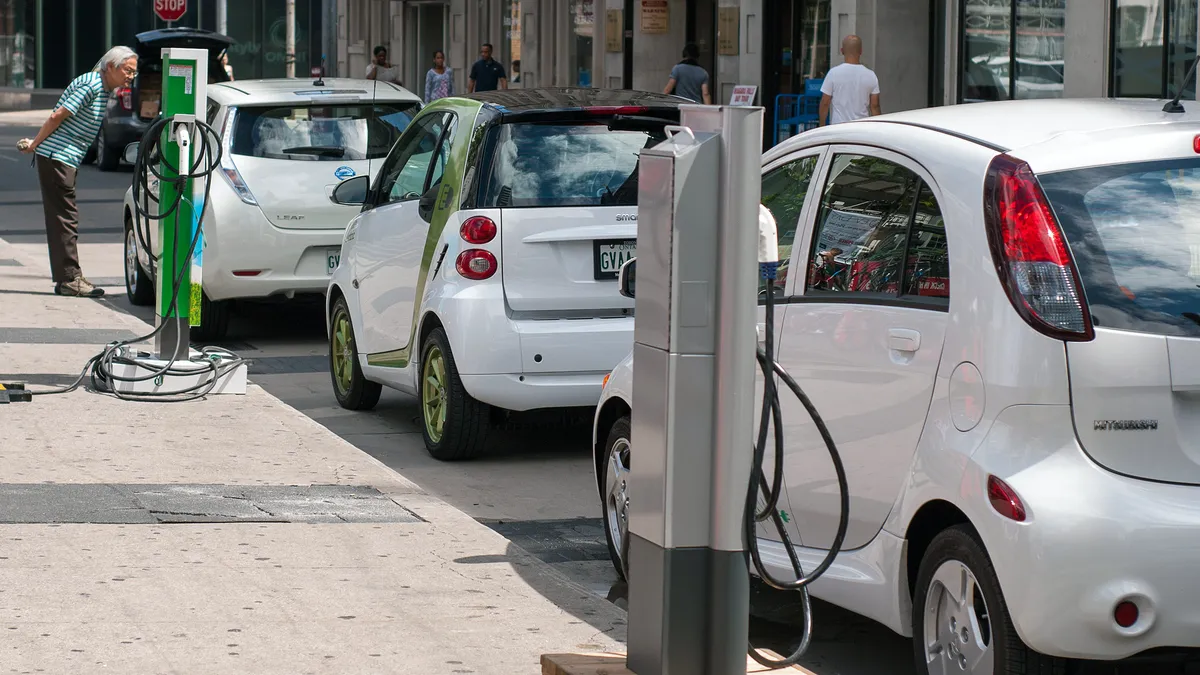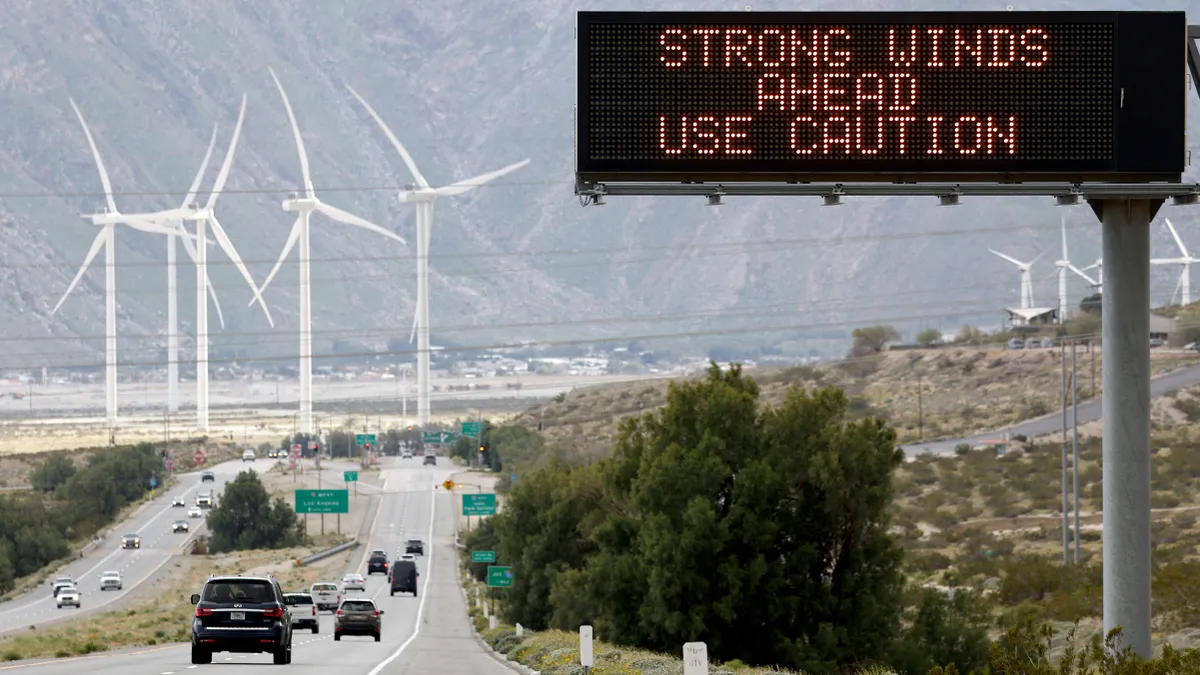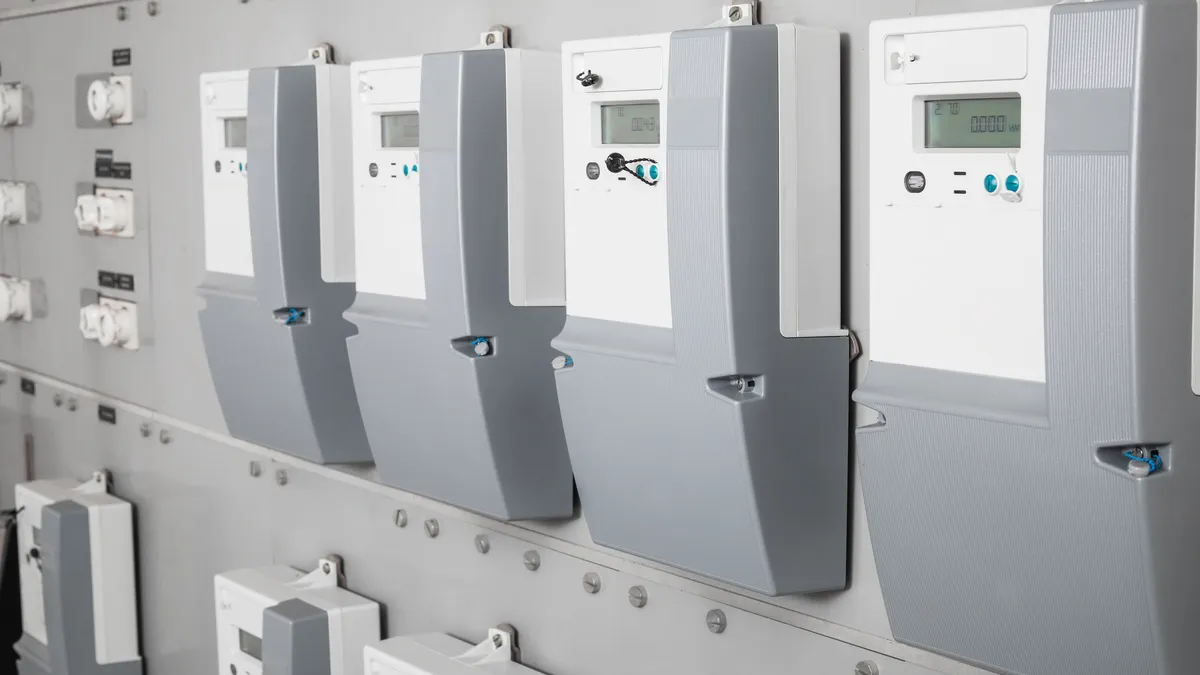Electric vehicles may soon make up a significant chunk of new car sales, as consumers become more confident in the technology and available charging infrastructure. Plug-in electric vehicles (PEV) are a small fraction of vehicles in the United States, but there could be 7 million on the road by the end of 2025, a June 2017 report from the Edison Electric Institute and the Institute for Electric Innovation forecasts.
While 7 million would still be a relatively small percentage of total vehicles in the U.S., it remains an open question how charging all those electric vehicles would impact the nation's power grid, particularly at the local, neighborhood level.
New research from the National Renewable Energy Laboratory (NREL) finds distribution transformers may need to be replaced more frequently, and peak load could push system limits, with just one or two electric vehicles on a neighborhood circuit. And as a second-wave of EV purchasers comes online, there are fears they will not be as engaged with energy management as their early-adopter predecessors.
Chickens and eggs
A chicken-egg conundrum has vexed the EV industry for years. Does charging infrastructure follow adoption? Or will consumers only buy in once they see public charging stations spreading? While states, utilities, manufacturers and a variety of organizations are working to roll out public charging stations, the bulk of vehicle charging is done in the home — more than 80%, according to the U.S. Department of Energy.
Efforts are being made to change this. Colorado Gov. John Hickenlooper (D) on Jan. 24 released an electric vehicle plan for his state, with a particular focus on public fast-charging stations. Two days later, California Gov. Edmund G. Brown Jr. (D) signed an executive order aimed at boosting refueling stations in the state, along with a target of 5 million zero emission vehicles by 2030.
"The broad load impacts [of EVs] may be minimal, but the grid impacts on a local level can be significant."

Matteo Muratori
Energy Systems Engineer, NREL
In Maryland, state regulators are debating a $100 million program to roll out 24,000 chargers that has broad support from conservationists and utilities. That could make it the second-largest network in the country.
The charging stations imagined in these proposals will be rolled out in a deliberate fashion, turning them into grid management assets rather than simply load. Utilities are excited to see some new demand coming onto their systems; they are also preparing to integrate charging into demand management platforms by using time-of-use rates and coordinated charging.
But what happens if the charging is uncoordinated?
More demand, no problem
Predictions for widespread EV adoption hinge on utilities reliably delivering the power. In aggregate, the demand generated by the electrification of transportation will likely not be a problem, analysts say. But the research from the Department of Energy’s NREL examines what could happen if charging remains tethered to the home as EV adoption rises — in that case, problems appear sooner, rather than later.
Matteo Muratori, a transportation and energy systems engineer at NREL, concludes in a new paper titled “Impact of Uncoordinated Plug-in Electric Vehicle Charging on Residential Power Demand,” that just a few vehicles in the same geographic areas could put stress on residential distribution transformers. And for a number of socio-economic reasons, electric vehicle adoption includes a "clustering effect" — if one person buys a vehicle, the chance their neighbor does as well rises significantly. This “will significantly increase the peak demand seen by distribution transformers," Muratori writes.
Muratori's simulation concludes that an EV market share of up to 3% — roughly 7.5 million vehicles — does not significantly impact the aggregate residential power demand.
"While the increase in aggregate demand might be minimal even for high levels of PEV adoption, uncoordinated PEV charging could significantly change the shape of the aggregate residential demand, with impacts for electricity infrastructure, even at low adoption levels," according to the paper. "Clustering effects in vehicle adoption at the local level might lead to high PEV concentrations even if overall adoption remains low, significantly increasing peak demand and requiring upgrades to the electricity distribution infrastructure."
The research also considered how the impacts change when customers upgrade to Level 2 charging, which exacerbates the issue with their higher demand. A Level 1 charger operates at less than 2 kW, while a Level 2 charger speeds the process by operating above 6 kW. “The distribution infrastructure might no longer reliably support the local electricity demand," according to the paper, and the lifespan of transformers could be shortened considerably.
Muratori's research focuses on a scenario where electric vehicles are all charged in homes, in an uncoordinated fashion. The study assumes TOU rates are ineffective and customers don't respond to price signals. It is not a particularly likely scenario, but the hypothetical may prove useful for utilities.
"The idea was to start from a system planning perspective and understand what the impact of PEV adoption could be on residential electricity infrastructure," Muratori said. “It's not a forecast of what will happen, but for utilities it is necessary to know what is the worst-case scenario because safety and reliability are two key elements for them.”
While Muratori's study focuses on an extreme, there are reasons to believe utilities will face difficulties as EV adoption rises.
Local impacts
In terms of capacity and being able to meet the demand from widespread EV adoption, Muratori said there are no indications utilities will have a problem acquiring energy to serve the load. Delivering it, however, may be an issue.
Even if the total market share for EVs remains limited, the NREL study notes that clusters of high adoption will still be found. At the local level, just one or two electric vehicles could start to test the limits of transformers because there might be as few as six homes connected to a transformer. In that instance, grid impacts can emerge very quickly.
"Transformers are very sensitive to peak load. They're basically designed to take a certain load. They can operate for some time above that with minimal problems, but as you operate above that load for longer periods, what happens is they age faster and need to be upgraded or replaced," Muratori said.
Equipment that under optimal conditions would last 30 to 40 years, could need to be replaced in 10, or upgraded sooner. "The broad load impacts may be minimal, but the grid impacts on a local level can be significant," Muratori said.
From the user perspective, early-adopters can be dream customers for utilities. They tend to be environmentally conscious, knowledgeable of TOU rates and technically savvy enough to participate in utility programs. But what happens next?
Will second-wave adopters be as sophisticated?
"The second wave of adopters could be a challenge for utilities," Muratori said.
As electric vehicle adoption moves from phenomenon to mainstream, a new type of customer will start signing up. These people aren't looking to be hyper-engaged with their utility, and don't want to spend too much time thinking about their car.
“If we imagine scenarios where EVs are adopted by the mainstream, then we must understand consumer behavior," Muratori said. “I'm not convinced everyone will be as responsive as current consumers are."
“Engaging with consumers will be key. People are not used to this electricity time of use pricing, or Level 1 and 2 charging. My fear is that people will just choose the most convenient option.”

Matteo Muratori
Energy Systems Engineer, NREL
The Salt River Project expressed a similar concern this month in the initial results of a study of electric vehicle owners' charging habits.
TOU rates were effective at helping push those loads off peak, the utility concluded, but SRP also noted that early adopters tend to be "more aware" of the savings from TOU rates and off-peak charging. The utility said it would work "to educate future EV owners on the benefits."
One issue is that electricity is relatively cheap, and when it comes to transportation many drivers may default to whatever is most convenient.
“Once people have access to Level 2 charging, they always use it,” Muratori said. “Engaging with consumers will be key. People are not used to this electricity time of use pricing, or Level 1 and 2 charging. My fear is that people will just choose the most convenient option.”
To engage these customers, utilities will need to lean heavily on technology to make systems operate as independently as possible. “They key is that it needs to be an automated system, it cannot require human intervention. If [the customers] have to remember something, that causes failure," Muratori said.
Increasingly, utilities must be focused on customer behavior in system planning. “The behavioral aspects are underestimated," he said.
Muratori concludes that future research should focus on understanding consumer driving and charging behavior and the reasons they choose levels of charging infrastructure. Ultimately, he said EVs and charging infrastructure will be an asset to grid reliability.
Wider adoption "will introduce new connections and synergies between the transportation and electric power sectors as well as other demand sectors," the paper predicts. "Integrating [EVs] with the electric power system poses a series of new challenges but also creates load growth opportunities for electric utilities."























